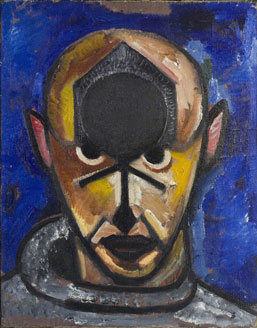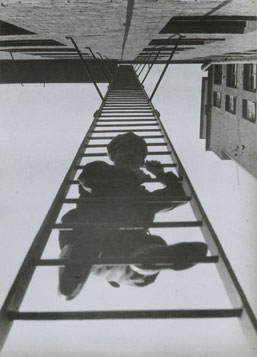Revolution Found in Blocks of Colour
Constructivism was an avant garde art movement formed in the midst of the Russian Revolution: a revolution given birth to by an increasingly mobile working population, blurring and reconstructing steadfast social boundaries, aiming to break down the authoritarian (and apparently divinely granted) rule of the Tsar over everyone, and the aristocracy’s hold over “high art”.
Using the ideas of the Enlightenment, the Revolution embraced reason, science and technology with the aim of employing these to decrease working hours and spread labour equally.
Constructivist artists, in particular the ones with which this exhibition is concerned with, Aleksandr Rodchenko and Varvara Stepanova (a husband-and-wife team, inseparable since meeting at art school), used art not only to express the ideologies of the Revolution and embody enlightened ideas, but for sociological value, literally making posters, flyers, clothing and packaging to aid the Revolution. Directly opposed to abstraction, the movement adopted the practical and the modern, characterised by singular block shapes, vivid colours and industrial materials.
Concerned with how these materials gained a new, organic form under the ideologies of Communism, and on how these materials use space (and vice versa), it became one of the most revered and influential avant-garde movements, even finding itself in twenty-first century pop culture, on Franz Ferdinand’s 2005 aptly titled album “You Could Have It So Much Better”.
You get the idea: this was a modern and motivated movement, growing with the spirit of revolution and leaving a massive trail behind it.
These qualities are not, however, always present in this exhibition. The Teien instead, provides traditional accommodation, which may not be wholly appropriate for a movement that can claim Bauhaus amongst its closest friends. The works of art are primarily concerned with material, time, space and volume, but the Museum has opted for a more conventional method of displaying them, which may disappoint some visitors.
The ground floor of the exhibition is nearly solely devoted to paintings from the pair. It is interesting to see their works contrasted, and I felt a greater dialogue with Stepanova’s work, with the colours and the lines, especially in ‘Female Figure N0.15’, successfully expressing the accessible and simple ideologies they wished to portray, more so than in Rodchenko’s work. It is also interesting to see logos of twenty-first century fashion displayed in their original form, such as Rodchenko’s ‘Two Circles N0.127’ in the “Linearism” series.
 The second floor displays their more practical steps to the communist cause. After the New Economic Policy in 1921 allowed some free enterprise, the pair designed packaging for state owned products, including milk, baked goods and baby dummies.
The second floor displays their more practical steps to the communist cause. After the New Economic Policy in 1921 allowed some free enterprise, the pair designed packaging for state owned products, including milk, baked goods and baby dummies.
On display there are designs for light fittings, wooden prototypes in the “Assembled and Disassembled” series, theatre set designs and Stepanova’s fabric designs, all with the trademark blocks of shape and colour. Unfortunately the second floor suffers from the same ailment as the first, with monotonous display techniques.
Given that this is more a historical museum exhibition than a gallery show, the lack of artistic presentation could be excused though there is a distinct lack of information. There are some boards which my beginner’s Japanese could not decipher (they may well include a wealth of information). However, these were few and far between.
Rodchenko’s photographs come at the end of the exhibition. He revolutionized photography, and unfortunately this selection of pictures does not really do his innovative angles an original techniques justice, and at the tail end of a rather long paper trail, it is difficult to give them the credit they deserve.
Amy Fox
Amy Fox


